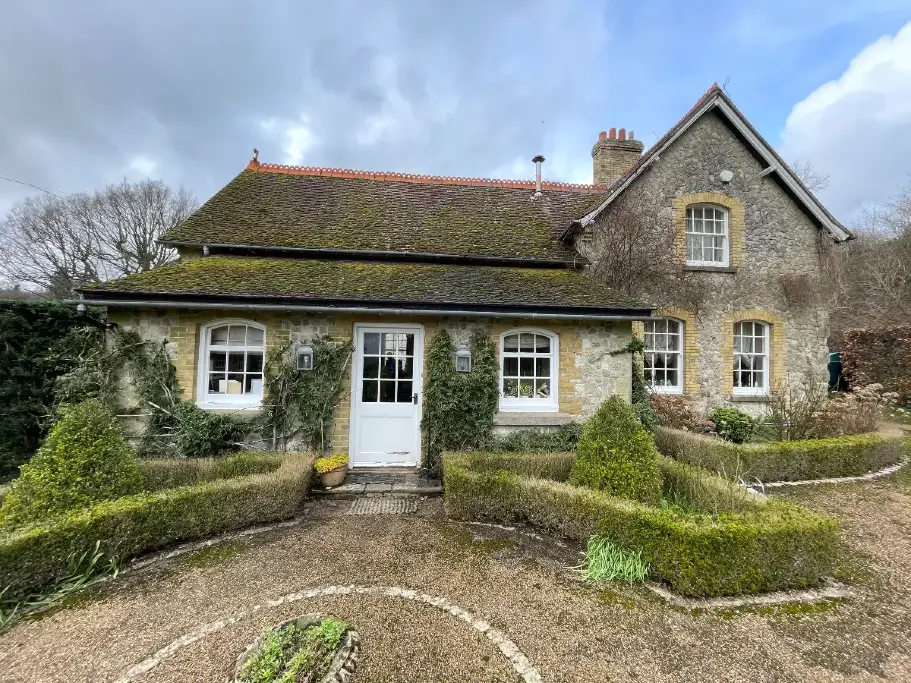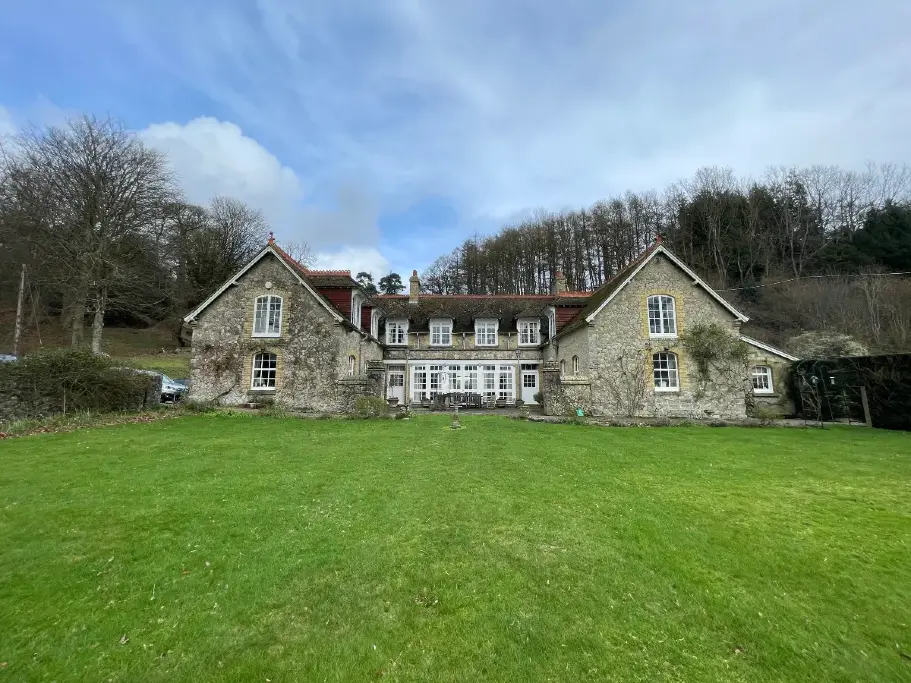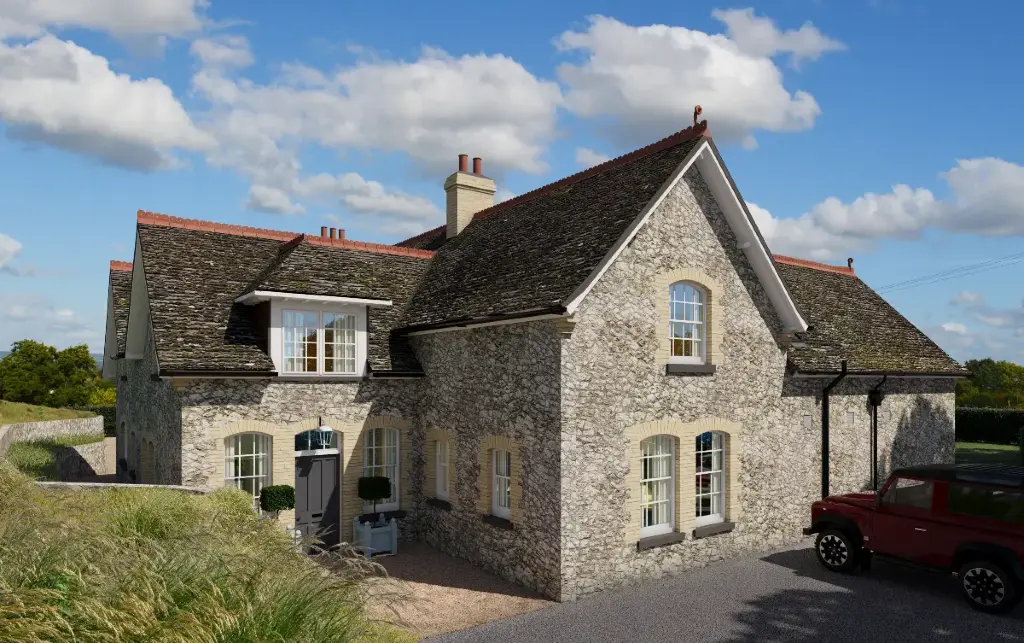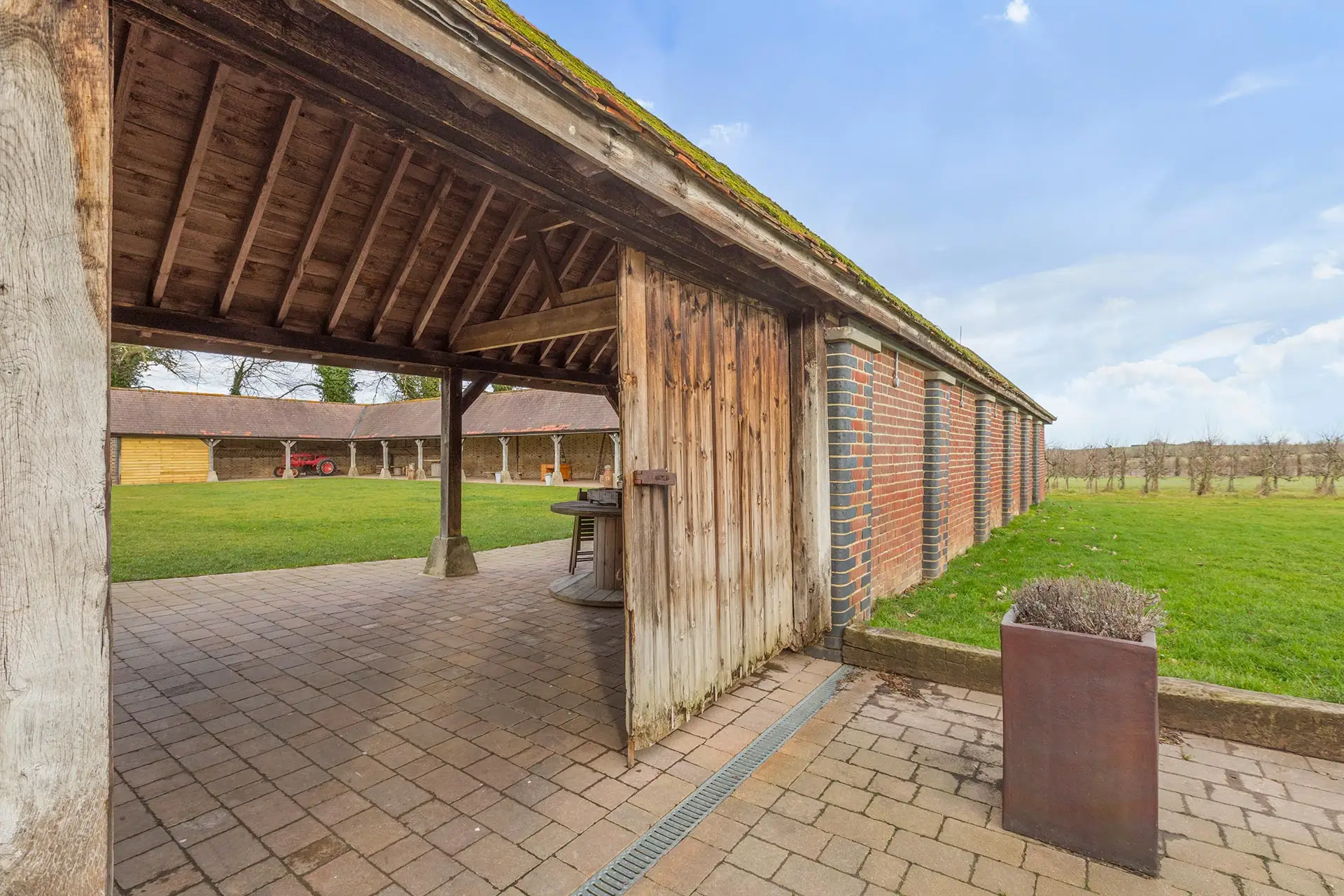
How We Gained Planning Permission on Green Belt Land for an Extension
The design adds an elegant two-storey wing to a Victorian home, modernising the layout while blending seamlessly with the building’s historic fabric.
The owners of The Stables approached us about extending their converted stable block and reorganising part of the internal spaces. They wanted to create a home that supports modern family life while honouring its period character.
To ensure continuity with the original structure, we placed the two-storey wing on a less prominent side. Traditional materials like Kent ragstone, brick quoins, and clay tiles help the addition feel contextually appropriate and timeless. Inside, we introduced a new double-height entrance hall and feature staircase to create a clear centre for the home and improve the existing impractical layout.
The result is an impressive, sympathetic extension that upgrades the home’s functionality and flow, while meeting strict planning requirements for development in the Green Belt and Kent Downs AONB.
The Stables, A Converted Victorian Stable Block in the Kent Downs
The Stables is located in a private estate near Ide Hill in the Sevenoaks district, surrounded by open fields and mature trees. It sits on a rural, secluded, and environmentally protected site within the Metropolitan Green Belt and the Kent Downs Area of Outstanding Natural Beauty.
Built in the 1890s as part of a larger estate complex, the building once served as horse stabling. It features late Victorian-era detailing, such as gabled roofs, tall chimneys, and ornate brick and ragstone work, inspired by Queen Anne and Second Empire styles.
Although it was converted into a home in the early 20th century, the building has retained much of its historic identity and stands as a rare example of a Victorian stable block adapted for residential use.
Now a private residence, the building is not listed but is of local architectural and historic interest.
The Brief: Getting Planning Permission for an Extension in an AONB and the Green Belt
The property had been passed down through the family, but with a new generation preparing to move in, it was time for an update. They wanted more space, improved functionality, and a layout that better suited modern life.
Rather than drastically redesigning the building, the clients wanted to update it, adding space where needed and reworking the existing layout for comfort, practicality, and flow.
Their key priorities included introducing a sixth bedroom to accommodate guests and creating a more intuitive internal flow.
They wanted the extension to feel like a natural continuation of the house, rather than a distinct or contrasting addition.
Because the site lies within both the Green Belt and the Kent Downs AONB, the design had to respond sensitively to its planning and environmental constraints.
The Design: A Two-Storey Extension That Balances Modern Living with Historic Character
Local policy shaped every aspect of this Green Belt extension. We kept the size, height, and appearance carefully balanced to comply with strict planning rules.
The new wing adds about 30% to the existing floor space and reinstates part of the historic U-shaped layout, which had been lost in earlier alterations.
Tucked away on the building’s less prominent side, the two-storey addition follows the original form and roofline but steps back just enough to read as a modern addition.
A flat-roofed section, hidden between pitched gables, keeps it low profile while preserving head height.
We carefully designed the glazing to let in light and views without disrupting the building’s character or rural setting. To achieve this, we used traditionally sized timber-framed windows and conservation rooflights.
We converted several existing windows into French doors to strengthen the connection between the interior and the landscape and improve access to the courtyard. Upstairs, Juliet balconies allow the full-height windows to open fully, improving ventilation.
Overall, the design delivers a sympathetic extension that sits comfortably within its rural context.
The Layout
The new wing adds generous living space, around 131m².
Key features include:
- A generous double-height entrance hall with a feature staircase that creates a clear focal point and makes it easier to move through the house
- A sixth bedroom on the upper floor with its own en suite and dressing area
- A landing space above the entrance hall that serves as a quiet reading nook or snug, linking the new bedroom to the rest of the house
- A guest bathroom and plant room near the entrance
- A large boot room and separate laundry are tucked into the quieter side of the plan.
Together, these spaces improve the home’s day-to-day functionality while making the most of the extension’s generous footprint.
The Materials
The materials palette complements the original stable block, helping to create a well-integrated, sensitive extension that avoids pastiche.
We clad the main walls in Kent ragstone and used brick quoins, soldier courses, and corbelling to match the original detailing.
We specified plain clay roof tiles to mirror the existing pitched roofs and timber-framed sash windows sized to match the originals.
On the upper floor, the metal-framed Juliet balconies have a slim, black-painted finish to blend with the traditional materials we used elsewhere.
Improvements to the Original House
The project also includes updating part of the original building. Through careful reconfiguration, we were able to modernise this period home for contemporary family life without compromising its historic charm.
We removed one of the two existing staircases and introduced a new circulation route around the double-height entrance hall, creating a stronger sense of flow.
By consolidating key functions like storage, laundry, and plant into the new wing, we freed up the existing rooms for sleeping and everyday use.
We partitioned oversized bedrooms to create more practical, comfortable spaces. We also relocated the children’s rooms nearer to the main bedroom and kept the far side of the house for guest accommodation.
The Landscaping
We used the landscaping to integrate the extension into its sloping setting and soften its visual impact within the rural landscape.
We designed a series of tiered, stone-faced retaining walls that step down from the addition, following the natural contours of the site. They provide access routes around the property for maintenance and are planted with native, bee-friendly species. Their surface textures and crevices support insects and wildlife year-round.
Sandstone paving setts create a welcoming entrance area, while the existing driveway and access routes remain unchanged.
Sustainability
We specified an air source heat pump to replace the oil heating system and introduced insulation upgrades across the original building to improve thermal performance while retaining period features.
These measures aim to reduce energy use, improve comfort, and future-proof the home.
The Planning Process
Because the site sits in both the Green Belt and the Kent Downs AONB, we contacted Sevenoaks District Council early with a pre-application enquiry.
Their main concerns were the extension's size and visibility, and how it might affect the landscape's openness.
We responded by reducing the bulk of the design and reworking the glazing to avoid too much light showing at night.
We also placed the new wing on a previously developed part of the site, matched the original materials, and stayed within the council’s 50% extension policy.
As a result, we secured planning permission for a significant Green Belt extension with no requests for changes.
Next Steps
With planning permission secured, the project is now moving into the technical design stage.
We are developing detailed construction drawings and coordinating specifications to ensure the extension is delivered exactly as planned.
As the scheme progresses toward tender, we continue to support the clients by helping them find a contractor and prepare for the build.
Construction is expected to begin in autumn 2026.
The Client’s Feedback
The clients were closely involved from the outset. Their vision on layout, flow, and materials helped shape key decisions, and they stayed engaged throughout the planning process.
They are very happy with the final design, especially how it improves day-to-day functionality without compromising the building’s character.
The extension and alterations deliver the space they needed while respecting the home's history and setting.
Thinking of Extending a Period Property or a Rural Home in a Sensitive Setting?
James Clague Architects is part of Latchmere House, a collective of architects, engineers, interior designers, surveyors, and property specialists working under one roof.
From our bases in Canterbury and Tunbridge Wells, we work across Kent, Sussex, Surrey, and the South East, delivering high-quality design in sensitive rural and heritage settings.
Whether you’re looking to extend a converted outbuilding or modernise a period home, we can support you through planning, preparing detailed applications, and connecting you with experienced contractors.
To discuss your project, book an initial consultation or call 01227 649073.





Our team of specialist architects offer a completely free and no-obligation telephone consultation to discuss your project, explain the process and how we can help.

